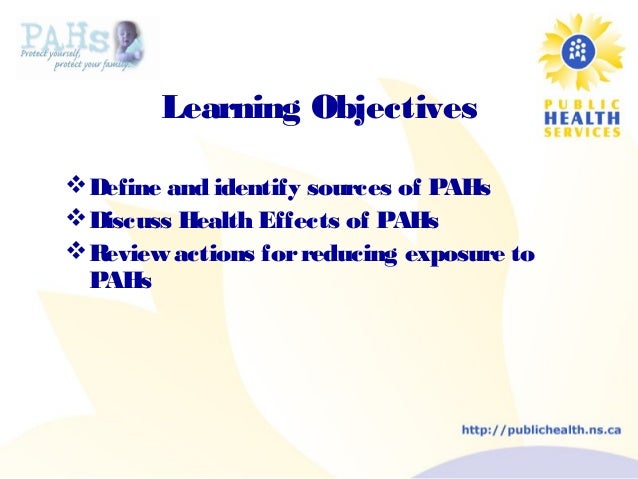
Image source: https://image.slidesharecdn.com/polycyclicaromatichydrocarbonspahspresentation-130410233538-phpapp02/95/polycyclic-aromatic-hydrocarbons-pa-hs-presentation-3-638.jpg?cb=1365636978
Exposure to creosotes, coal tar, coal tar pitch, or coal tar pitch volatiles may result in minor to serious health effects. Eating food or drinking water contaminated with a high level of these compounds may cause a burning in the mouth and throat as well as stomach pain. Additionally, taking herbal remedies containing creosote bush leaves may result in damage to the liver or kidney.
Reports describing poisoning in workers exposed to coal tar creosote, or in people who accidentally or intentionally ate coal tar creosote, indicate that brief exposure to large amounts of coal tar creosote may result in a rash or severe irritation of the skin, chemical burns of the surfaces of the eye, convulsions and mental confusion, kidney or liver problems, unconsciousness, or even death.
Longer exposure to lower levels of coal tar creosote, coal tar, coal tar pitch, or coal tar pitch volatiles by direct contact with the skin or by exposure to the vapors from these mixtures can also result in increased sensitivity to sunlight, damage to the cornea, and skin damage such as reddening, blistering, or peeling. Longer exposures to the vapors of the creosotes, coal tar, coal tar pitch, or coal tar pitch volatiles can also cause irritation of the respiratory tract.
Skin cancer and cancer of the scrotum have also resulted from long exposure to low levels of these chemical mixtures, especially through direct contact with the skin during wood treatment or manufacture of coal tar creosote-treated products, or in coke or natural gas factories.
Prolonged skin exposure to soot and coal tar creosote has been associated with cancer of the scrotum in chimney sweepers. In studies, rats and mice fed a large amount of wood creosote at one time had convulsions and died. Rats fed a smaller amount of wood creosote for a long period developed kidney and liver problems and died. Exposure to coal tar products through the skin has resulted in skin cancer in animals.
Laboratory animals that ate food containing coal tar developed cancer of the lungs, liver, and stomach, and animals exposed to coal tar in the air developed lung and skin cancer.
The International Agency for Research on Cancer (IARC) has classified coal tar as carcinogenic to humans and creosote as probably carcinogenic to humans. The Environmental Protection Agency (EPA) has also identified coal tar creosote as a probable human carcinogen.
Testing for Creosote Exposure
Unfortunately, no medical test can determine if a person has suffered exposure to wood creosote, coal tar creosote, coal tar, coal tar pitch mixtures, or coal tar pitch volatiles. Doctors can detect and measure chemicals contained in creosote (such as polycyclic aromatic hydrocarbons or phenols) in body tissues (organs, muscle, or fat), urine, or blood after exposure to creosote. Typically, doctors perform such tests on employees who work with and are exposed to coal tar creosote, coal tar, and coal tar pitch to monitor their exposure.
